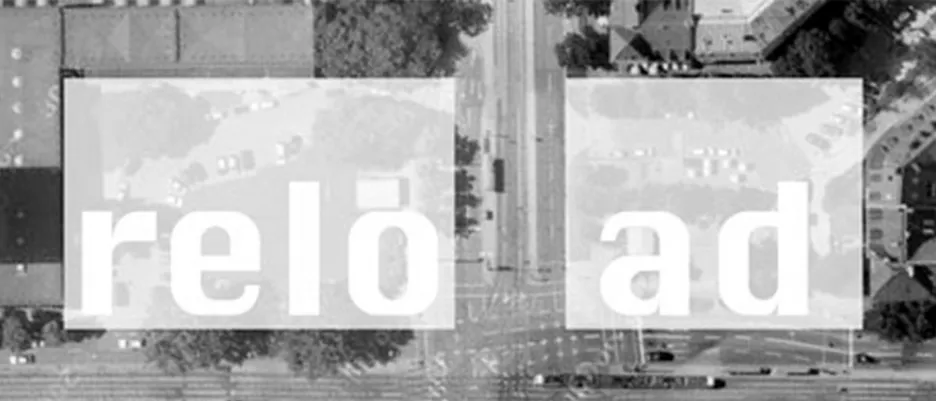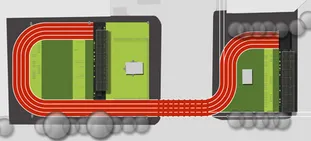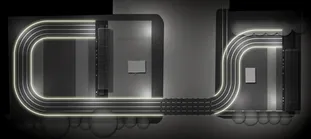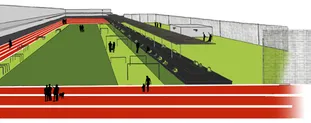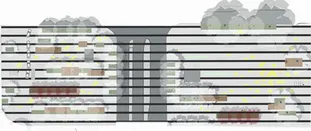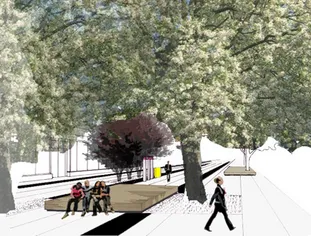"Reload Leonrod"
Project I, Winter Semester 2008/09
Topic & Task
The Leonrodplatz in the eastern part of the Munich district of Neuhausen-Nymphenburg is divided into four quadrants by two main traffic axes. The two quadrants east of Dachauer Straße, currently consisting of vacant lots and buildings to be demolished, are set to be developed in the near future. The two quadrants west of the thoroughfare are the subject of this design project and already exist as publicly accessible square areas.
The square is characterized by a mix of functions, including retail zones, outdoor dining areas, parking spaces, roadways, kiosks, taxi stands, transformer houses, a dog park, and a tram junction. The high level of activity in this space is less due to its attractiveness as a public space and more because of the density of infrastructure. The square appears disordered and noisy, with only a few visitors using it for extended stays or relaxation. Despite its location, connectivity, and facilities that might qualify it as a neighborhood center, its current appearance does little to foster positive identification among residents.
The task at hand is to reorganize, reprogram, and consequently redesign both parts of the square. The goal is to create a place that can serve as a platform for many of its current functions but also has the potential to be identity-defining. Additionally, the theme of urban furniture should be explored in-depth. The existing clutter should give way to a conceptually coherent and detailed furnishing plan.
As an additional task, a diary should be kept continuously during the semester, documenting observations, ideas, and concepts related to the theme of "public space" in the broadest sense through drawings and images. The objective is not merely to practice "depicting" things in terms of perspective and proportion but rather to "represent" something, which is always linked to an intention—making choices, emphasizing, highlighting, concealing, and relating observations, ideas, and concepts in order to "express" them. This should be done visually through drawings and images rather than textually. The fundamental visual elements are form and color in relation to the canvas, in this case, the pages of the diary.
Supervision
Prof. Regine Keller, Dipl.-Ing. Doris Grabner, Dipl.-Ing. Thomas Hauck, Dipl.-Ing. Volker Kleinekort, Dipl.-Ing. Albert Gründel (Modellbau), Cand.-Ing. Lisa Gritto
